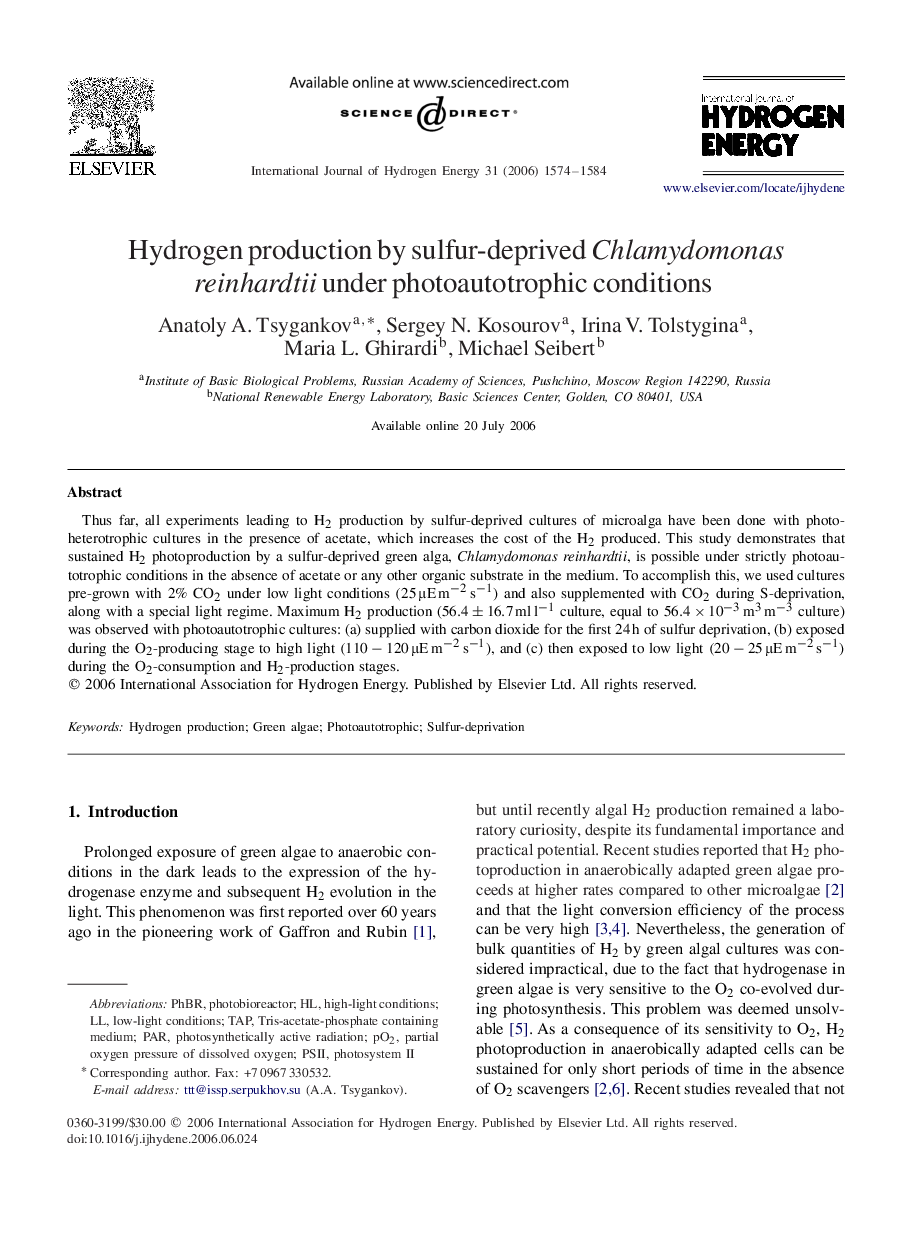| Article ID | Journal | Published Year | Pages | File Type |
|---|---|---|---|---|
| 1282008 | International Journal of Hydrogen Energy | 2006 | 11 Pages |
Thus far, all experiments leading to H2 production by sulfur-deprived cultures of microalga have been done with photoheterotrophic cultures in the presence of acetate, which increases the cost of the H2 produced. This study demonstrates that sustained H2 photoproduction by a sulfur-deprived green alga, Chlamydomonas reinhardtii, is possible under strictly photoautotrophic conditions in the absence of acetate or any other organic substrate in the medium. To accomplish this, we used cultures pre-grown with 2% CO2 under low light conditions (25μEm-2s-1) and also supplemented with CO2 during S-deprivation along with a special light regime. Maximum H2 production (56.4±16.7mll-1 culture, equal to 56.4×10-3m3m-3 culture) was observed with photoautotrophic cultures: (a) supplied with carbon dioxide for the first 24 h of sulfur deprivation, (b) exposed during the O2-producing stage to high light (110--120μEm-2s-1), and (c) then exposed to low light (20--25μEm-2s-1) during the O2-consumption and H2-production stages.
